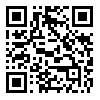BibTeX | RIS | EndNote | Medlars | ProCite | Reference Manager | RefWorks
Send citation to:
URL: http://jmp.ir/article-1-569-en.html
2- Virology Department, School of Public Health, Tehran University of Medical Sciences, Tehran ,
3- Virology Department, School of Medicine, Iran University of Medical Sciences, Tehran
4- Virology Department, School of Public Health, Tehran University of Medical Sciences, Tehran
Background: Medicinal plants have been traditionally used for different kinds of ailments including infectious diseases. There is an increasing need for substances with antiviral activity since the treatment of viral infections with the available antiviral drugs often leads to the problem of viral resistance. There is a need to search for new and more effective antiviral agents.
Objective: therefore in the present study 20 plants with ethno-medical background from different families were screened for antiviral activity against HSV-1, Adenovirus type 5, Echovirus type 11, Measles virus and Rotavirus.
Methods: Different parts of the plants collected from Iran were extracted with aqueous solvents to obtain crude extracts. These extracts were screened for their cytotoxicity against Vero, BSC-1, Hep-II and RD cell lines by assays micro-culture neutral red dye absorption and microscopically follow up for CPE. Antiviral properties of the plant extracts were determined by cytopathic effect inhibition assay and plaque reduction assay.
Results: Three plants extract Aristolochia maurorum, Terminalia chebula Retz. and Cichorium intybus L. exhibited significant antiviral activity against HSV-1 and adenovirus type 5 at a concentration non toxic to the cell lines used. The extracts of Aristolochia maurorum and Cichorium intybus L. showed great anti viral activity against HSV-1 and partial activity against adenovirus at higher concentrations.
Received: 2005/12/17 | Accepted: 2006/12/16 | Published: 2007/03/20
| Rights and permissions | |
 |
This work is licensed under a Creative Commons Attribution-NonCommercial 4.0 International License. |







